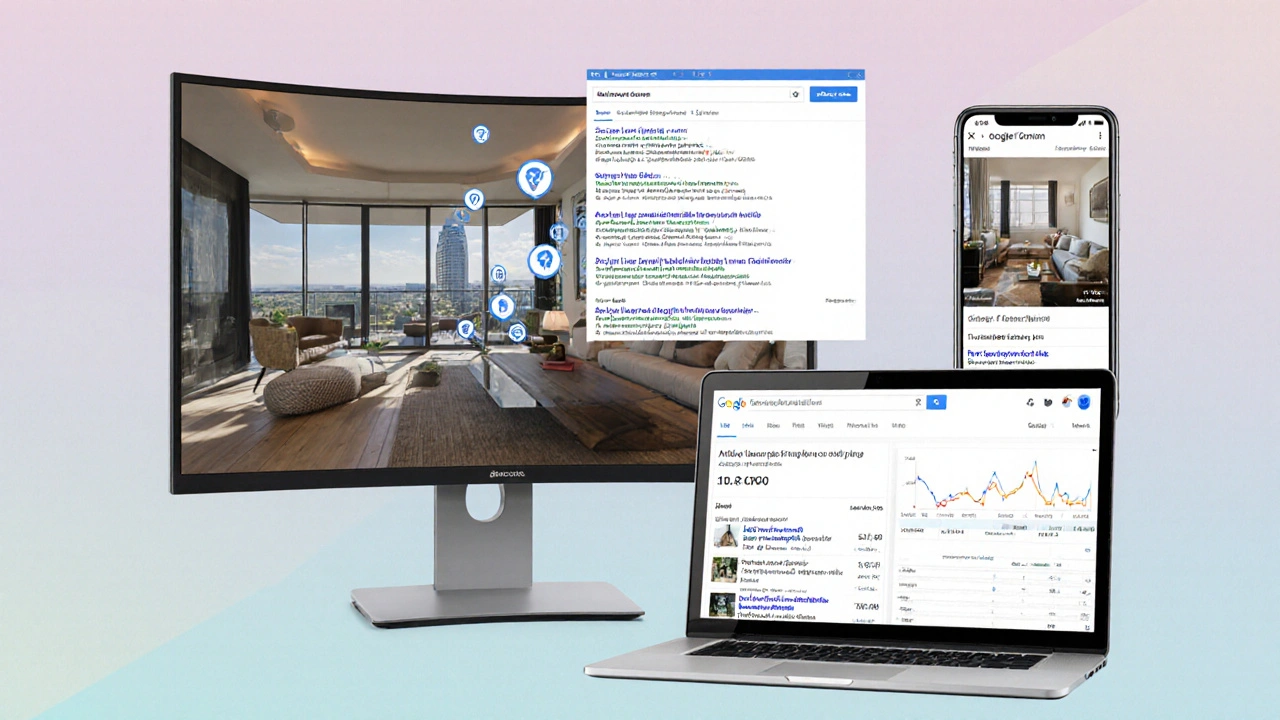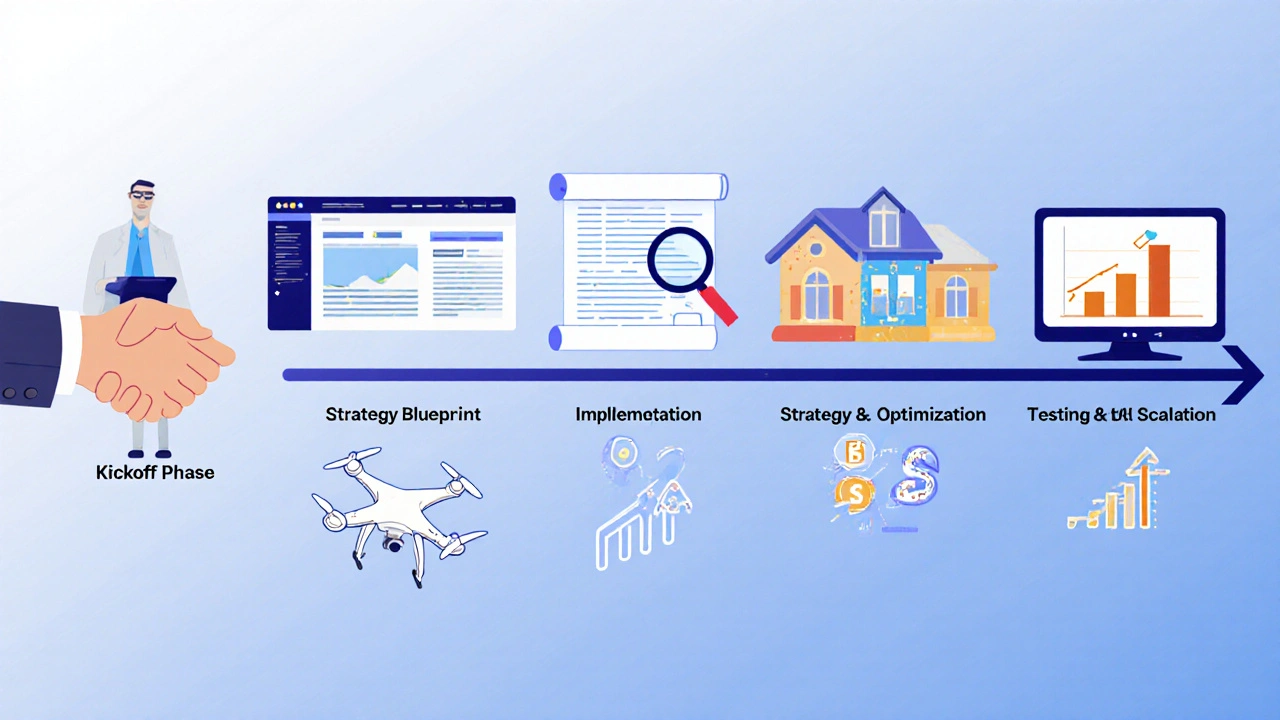Real Estate Marketing Agency ROI Calculator
Estimate your potential return on investment by hiring a specialized real estate marketing agency. Based on data from the article, agencies typically help increase leads by 30-50% while reducing cost per lead.
After calculations, this tool will show you:
When it comes to selling homes, developers, brokers, and agents all face the same challenge: getting the right buyers in front of the right listings at the right time. A real estate marketing agency is a specialized service provider that blends traditional real‑estate know‑how with modern digital tactics to generate qualified leads, shorten sales cycles, and amplify brand credibility.
Why Real Estate Needs Its Own Marketing Playbook
Generic ad agencies often treat property listings as just another product line. Real‑estate transactions, however, involve high ticket values, long decision cycles, and strict local regulations. According to the National Association of Realtors, 81% of homebuyers start their search online, and 56% rely on virtual tours before stepping foot on a property. Ignoring these digital touchpoints means losing a majority of the buyer pool.
Specialized agencies understand three unique levers:
- Digital advertising that targets demographics based on income, life‑stage, and geographic intent.
- Content marketing that builds trust through neighborhood guides, market reports, and homeowner tips.
- Social media marketing that showcases lifestyle images, Instagram reels, and live Q&A sessions.
Core Services You’ll Find in a Top‑Tier Agency
Every reputable agency offers a suite of services that together create a full‑funnel experience. Below is a quick rundown of the most common deliverables.
- Search Engine Optimization (SEO): Optimizing listing pages for local keywords like "Austin luxury condos for sale" to appear in the top three Google results.
- Pay‑Per‑Click (PPC) Management: Running Google Ads and Facebook Ads with conversion tracking to ensure each dollar spent brings a qualified lead.
- Video Tours & 3‑D Walkthroughs: Producing high‑resolution walkthroughs that increase time‑on‑page by an average of 70%.
- Email Drip Campaigns: Nurturing leads with automated sequences that deliver market updates, new listings, and financing tips.
- CRM Integration: Connecting lead data to platforms like HubSpot or Salesforce so agents can follow up instantly.
- Brand & Reputation Management: Monitoring reviews on Zillow, Google My Business, and social channels to protect the agency’s image.
How to Evaluate a Real Estate Marketing Agency
Choosing the right partner is a critical decision. Use the checklist below to compare candidates objectively.
- Portfolio relevance - Do they showcase case studies in your market segment?
- Performance metrics - Look for disclosed CPA (cost per acquisition) and CPL (cost per lead) numbers.
- Technology stack - Do they use AI‑driven audience segmentation or basic spreadsheet reporting?
- Team expertise - Verify that at least one strategist has a real‑estate background.
- Transparency - Contracts should outline deliverables, timelines, and reporting cadence.
- Scalability - Can the agency handle a sudden influx of listings during a new development launch?

Agency vs. In‑House Marketing: A Quick Comparison
| Factor | Hire an Agency | Build In‑House |
|---|---|---|
| Up‑front cost | Monthly retainer (often $5k‑$15k) - predictable cash flow | Salary + tools - higher initial investment |
| Expertise breadth | Specialists in SEO, PPC, video, CRM | Limited to staff skill set |
| Scalability | Easy to add campaigns during peak seasons | Requires hiring or overtime |
| Technology access | Proprietary AI tools, premium ad platforms | May need separate subscriptions |
| Time to results | Faster due to pre‑built processes | Longer learning curve |
| Risk | Contractual penalties if KPIs aren’t met | Higher internal risk if staff turnover occurs |
Common Pitfalls and How to Avoid Them
Even with a solid agency, mistakes happen. Here’s what to watch for:
- Over‑promising on lead volume - Insist on realistic KPI benchmarks backed by past performance.
- Neglecting local compliance - Ensure ads respect fair‑housing rules and state disclosure requirements.
- Relying solely on paid traffic - Blend organic SEO and content to sustain long‑term visibility.
- Skipping regular reporting - Request weekly dashboards; a data‑driven approach uncovers under‑performing ads quickly.

Step‑by‑Step: Onboarding Your Real Estate Marketing Agency
- Kickoff meeting: Share branding assets, target demographics, and sales goals.
- Audit phase: Agency reviews existing website, listings, and analytics to identify gaps.
- Strategy blueprint: Receive a 30‑60‑90 day plan covering SEO, paid ads, and content calendar.
- Implementation: Launch first wave of ads, publish blog posts, upload video tours.
- Testing & optimization: Review CPL and adjust bids, creatives, and landing page copy weekly.
- Reporting & scaling: Monthly performance review; expand budget to high‑ROI channels.
Following this flow minimizes miscommunication and speeds up the path to measurable leads.
Frequently Asked Questions
What does a real estate marketing agency actually do?
It combines digital advertising, SEO, content creation, video production, and CRM integration to attract, nurture, and convert property buyers. The goal is to turn listings into qualified leads at a lower cost than traditional methods.
How much should I expect to pay for these services?
Most agencies work on a monthly retainer ranging from $5,000 to $15,000, depending on market size, number of listings, and the breadth of services. Some also charge a performance‑based fee tied to leads generated.
Can I handle marketing in‑house and still be competitive?
It’s possible, but you’ll need a team with expertise across SEO, PPC, video, and analytics. Most small to mid‑size brokerages find an agency more cost‑effective because it provides instant access to specialized talent and technology.
How long before I see real results?
Paid campaigns can generate leads within days, while SEO typically takes 3‑6 months to climb rankings. A balanced strategy usually shows a noticeable lift in qualified inquiries within the first 30‑45 days.
What metrics should I track to gauge success?
Key metrics include Cost‑Per‑Lead (CPL), Conversion Rate from lead to showing, Average Days on Market, and Return on Ad Spend (ROAS). For brand work, monitor organic traffic growth and social engagement.

7 Responses
While most marketers trumpet the virtues of digital funnels, the deeper ethical implications of turning homes into click‑bait deserve scrutiny. The commodification of habitation risks reducing shelter to a mere data point, and that moral erosion cannot be ignored. Agencies that promise instant leads often overlook the long‑term consequences of inflating expectations among first‑time buyers. Moreover, the reliance on aggressive retargeting can erode privacy, turning prospective homeowners into perpetual subjects of surveillance. The promised efficiency glosses over the fact that many of these campaigns are built on opaque algorithms that prioritize profit over genuine buyer‑seller alignment. In the rush to adopt AI‑driven segmentation, we risk sidelining the human nuance that guides families to the right neighborhood. The narrative that a higher CPL is acceptable if a sale eventually closes neglects the emotional toll on sellers who feel pressured by ever‑shortening windows. Transparency should not be a buzzword; it must be a contractual commitment, including clear reporting on how leads are sourced. Agencies that claim expertise without offering verifiable case studies are, at best, overconfident and, at worst, exploiting their clients. The industry also needs to grapple with the environmental impact of producing endless video tours that consume significant energy. While 3‑D walkthroughs impress, they add to the carbon footprint of the digital advertising ecosystem. A truly responsible agency would balance innovative marketing with sustainable practices, something rarely highlighted in glossy brochures. Finally, the conflation of brand reputation with aggressive ad spend can breed a culture where quantity trumps quality, leaving buyers disillusioned. In short, the seductive promise of rapid lead generation must be weighed against these moral and practical considerations.
This offers a clear rundown of what to look for, especially the part about checking CPA numbers before signing. It’s a solid starting point for anyone new to agency partnerships.
The SEO bullet points are spot on – local keyword targeting can really boost visibility. Also, integrating CRM data feeds helps streamline follow‑ups without extra manual work.
I appreciate the checklist; having a transparent contract really cuts down on surprise fees. It also helps align expectations between the broker and the agency.
Don’t forget to keep the content fresh – fresh blog posts and updated market reports keep the SEO juice flowing. A good agency will also help you repurpose video tours into short social clips for extra reach.
The emphasis on weekly dashboards is crucial; real‑time metrics let you pivot campaigns before budget waste occurs. Additionally, measuring engagement on social platforms provides a more holistic view of brand health. A transparent reporting cadence also builds trust between the agency and the brokerage. It’s wise to request both high‑level overviews and granular data points for deeper analysis.
Such agencies often overpromise on lead volume without substantiating past performance.